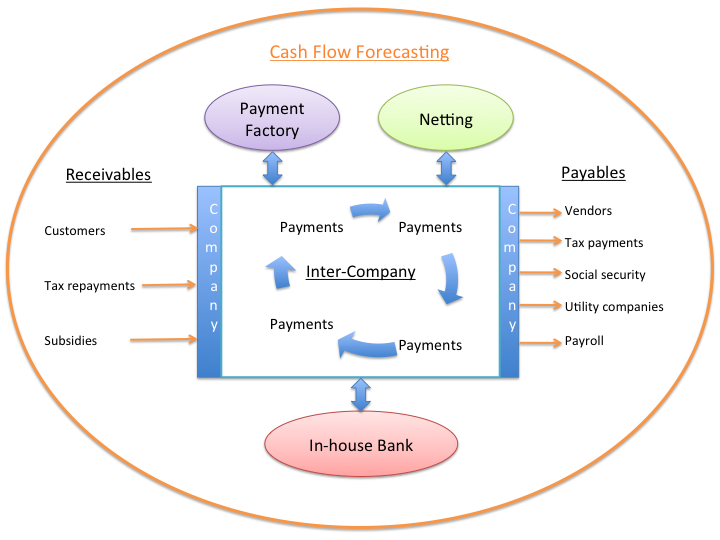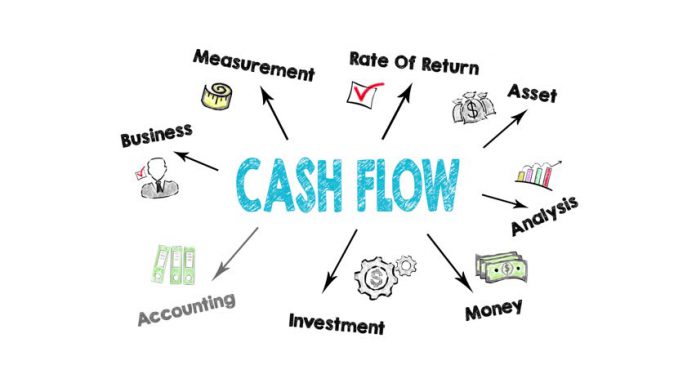As trusted advisors, accountants and bookkeepers, we are in a good position to advise small businesses when they are facing cash-flow issues. Below, describe 10 strategies to help improve a company’s cash position. Not all of these strategies make sense for all businesses. However, some combination of these can be employed by any business.

In the long-term, free cash-flow, equity and debt financing are the best sources of working capital. However, these options may not be available for all businesses. In such cases, there are alternative cash-flow management strategies that small business can use to ease the strain on their working capital. Here are some of those:
1. Ask for a deposit or milestone payment
Companies whose product or service requires substantial cash or effort before they deliver are good candidates for asking clients for a deposit or milestone payment. Graphic designers, web designers, marketing agencies, PR agencies and even construction companies fall into this bucket. Not all clients may be willing to make a deposit or milestone payment. The only thing that is guaranteed is that you won’t get what you don’t ask for. So, encourage your customers to ask their customers for a deposit. That might be just what they need to get on solid footing.
2. Ask customers to pay faster
Another option for managing cash-flow is to get customers to pay faster. This can take several forms. The simplest form is to give vendor discounts, where 2/10, Net 30 terms would entail giving customers a 2% discount if the invoice is paid within 10 days. Otherwise, the full amount is due in 30 days. This can be an attractive proposition for a company’s customers, as it allows them to make the equivalent of a 73% APR in ten days just by paying their bills faster.
3. Cut or Delay Your Payable / Expenses
In the event that customers won’t pay faster, another option is to delay expenses. The strategy can take on a variety of forms, depending on the business. Manufacturing companies may consider using lower cost inputs to deliver the same goods or service, while a service company may opt for spending less time on the same work. Companies should also consider exhausting existing inventory before purchasing new inventory, or hiring part-time or contract employees to replace full-time employees.
Also consider how your client’s personal expenses impact their business. Given how much of their expenses may be personal in nature—either indirectly via the salary they pay themselves, or directly as a sole proprietor—they might want to consider what opportunities they have to cut back on their personal expenses. It may entail eating out less, downsizing, living more frugally or delaying a vacation. Out of all the variables listed here, personal expenses are the ones business owners have the most direct control over.
4. Request more favorable payment terms from vendors
As they value their clients, vendors have a strong incentive to help finance their customers’ purchases. Getting an extra two weeks to make a payment could be the difference between missing payroll and expanding. If your payment terms are 15 days, ask for 30 days. If they are 30 days, ask for 45 days. Depending on your relationship with your vendors, you’ll find that at least some will be open to a more favorable arrangement. And, be persistent! Perhaps you’ve tried asking for more favorable payments terms before, but were declined. You have little to lose by asking again, either inquiring the same vendor or a different vendor. Of course, the more timely and dependable you are with them, the more willing they will be to extend their terms.
5. Finance purchase orders
For manufacturing or merchandising companies that require a significant amount of cash to fulfill their purchase orders, financing purchase orders could be a solution. Once you have a purchase order on hand, the financing company will pay the vendor so you can get the merchandise or inventory the company needs to fulfill the purchase order. This eliminates the problem of getting a large order, but not being able to fulfill it because of cash to buy the inventory or materials.
6. Increase margins
Increasing its margins will help a business spin-off more cash that can be used to fund operations. The only two ways a business can increase its margin are by increasing what it charges or decreasing the cost to deliver the product or service. Neither of these may be feasible for a majority of businesses. However, raising prices is a real option for businesses with strong demand for their product or service, or with a unique product, offering or value proposition that is not available from competitors. Any increase in prices will have to be positioned carefully to avoid alienating customers.
7. Sell or lease idle equipment
When cash is tight, everything should be on the table. This is especially true of idle equipment that can be sold for cash or leased to another company that can put it to use. Even if the company is using the equipment, it should consider that the same equipment could be rented for much less, while the proceeds from the sale can be used to fund the business in the interim. This especially makes sense for long-lived equipment that is easy to move, transport or install. If you have a storage center with equipment, you’ll also be saving on storage costs. With Craigslist, chances are, you’ll be able to pick up the same equipment at a later time for a fraction of the cost.
8. Sell future revenue
A merchant cash advance is a viable strategy for consumer businesses like retailers and restaurants. It involves taking a loan that is automatically repaid via a percentage of the credit and debit card transaction volume received by the business. This strategy is especially viable for businesses with strong transaction history. Just make sure that the company’s margins can support the cost of the financing. Otherwise, they could be paving their way to financial ruin.
9. Turn down, shift or post-pone work
Managing cash-flow is as much about timing as anything. Getting a year’s worth of business in one month is overwhelming for most businesses. On the flip side, insufficient business could mean shutting the doors. Thus, managing the volume of business for consistency can be a helpful way to manage cash-flow. This may entail turning down or postponing work certain times of the year. This strategy is not realistic for companies with strongly seasonal business. Retailers, snowplowers and tax accountants will not be able to change the seasonality of their business. However, many other companies and industries do have the ability to better plan for more consistent volume and shift the timing of the work. Think win-win. For instance, you can offer good clients a discount for postponing their work, order or service.
10. Sell invoices
Selling invoices, also known as invoice factoring, invoice discounting, invoice financing, etc., is a very flexible and quick form of business funding available for B2B companies. In a nutshell, invoices are assets of a company. The product or service has been completed and delivered, but the cash is locked up in the invoice until the customer pays. Factoring can be a solution when payment terms are 15, 30 or even 60 days. Instead of waiting 60 days for the client to pay, a company can “sell” the invoice to a factoring company and get money upfront. 60 days later, the client pays off the invoice, so the company never had to take on any debt. Here is a great post about the basics of invoice factoring, and what to look for in a funding provider.
11. Others Tips
- Invoice Promptly – Make sure to invoice your customers without any delay. The faster you mail an invoice, the faster you will be paid. If deliveries do not automatically trigger an invoice, establish a set billing schedule, preferably weekly. All invoices should include a payment due date along with invoice notes and terms and conditions.
- Follow up on Default Payments / Speed Up Recovery Of Receivables – Don’t allow an invoice to remain overdue for a very long time. As soon as a bill becomes overdue, call the customer and ask when you can expect payment. Ask delinquent customers with genuine financial problems to try to pay at least a small amount periodically. When necessary, don’t hesitate to seek professional help from an attorney or collection agency.
- Offer Trade Discounts – Offering discounts on prompt payments is a widely used technique to encourage customers for making timely payments. Given an incentive, some customers will pay sooner rather than later. Trade discounts typically give 1% – 2% off the total amount due if customers pay within a certain no. of days.
- Deposit Payments Promptly – It is always a healthy business sign when you have optimum working capital available. And sooner you make a deposit, the sooner you can put the money to work for your business. This speeds up your business cash flow and makes funds available for daily expenses.
- Review and Reduce Expenses – If you’re not sure an expense is necessary, hold back until you are confident it will have a favorable impact on the bottom line. Reduce operating costs such as switching from a weekly to a biweekly payroll to reduce payroll processing costs. Be careful not to cut costs that could hurt profits. For instance, rather than cutting the marketing budget, redirect the money to areas where it has a more positive impact.
- Pay Bills on Time – Even though you are required to pay for your bills on time, you can take the liberty to pay as late as possible but only to an extent where you do not incur late fees or interest charges. Exception could be made for bills where trade discounts are offered.
- Manage Inventory Efficiently – Inventory management is essential to maintain proper cash flow. Less cash tied up in inventory would invariably result in better cash flow. Also, make sure to order for additional inventory when current inventory level is down to bare minimum.
- Liquidate Cash Tied Up With Assets.
Do you have equipment you no longer use or inventory that’s becoming obsolete? Consider selling it to generate quick cash. Idle, obsolete, and non-working equipment takes up space and ties up capital which might be used more productively.
Equipment that has been owned for a longer period will usually have a book value equal to its salvage value or less, so a sale might result in a taxable gain. This gain should be reported on your tax filings. If you have to sell below the book value, however, you will incur a tax loss, which can be used to offset other profits of the company.
Excess inventory can quickly become obsolete and worthless as customer requirements change and new materials are introduced. Consider selling any inventory which is unlikely to be used over the next 12 months unless the costs to retain it are minimal and the proceeds from a sale would be negligible.
Final words
These tips could prove very helpful for startups and small businesses in keeping the money flowing and healthy management. Cash flow management is an important part of the business cycle. Every strategy mentioned above helps you maximize the cash flow and provide streamlined benefits at each business step.
Given these strategies, consider which make the most sense for your client’s business. Working capital is the fuel that powers small businesses. By understanding the options available to them, your clients will be much better equipped to manage their working capital and, in turn, maintain and grow their operations.



















